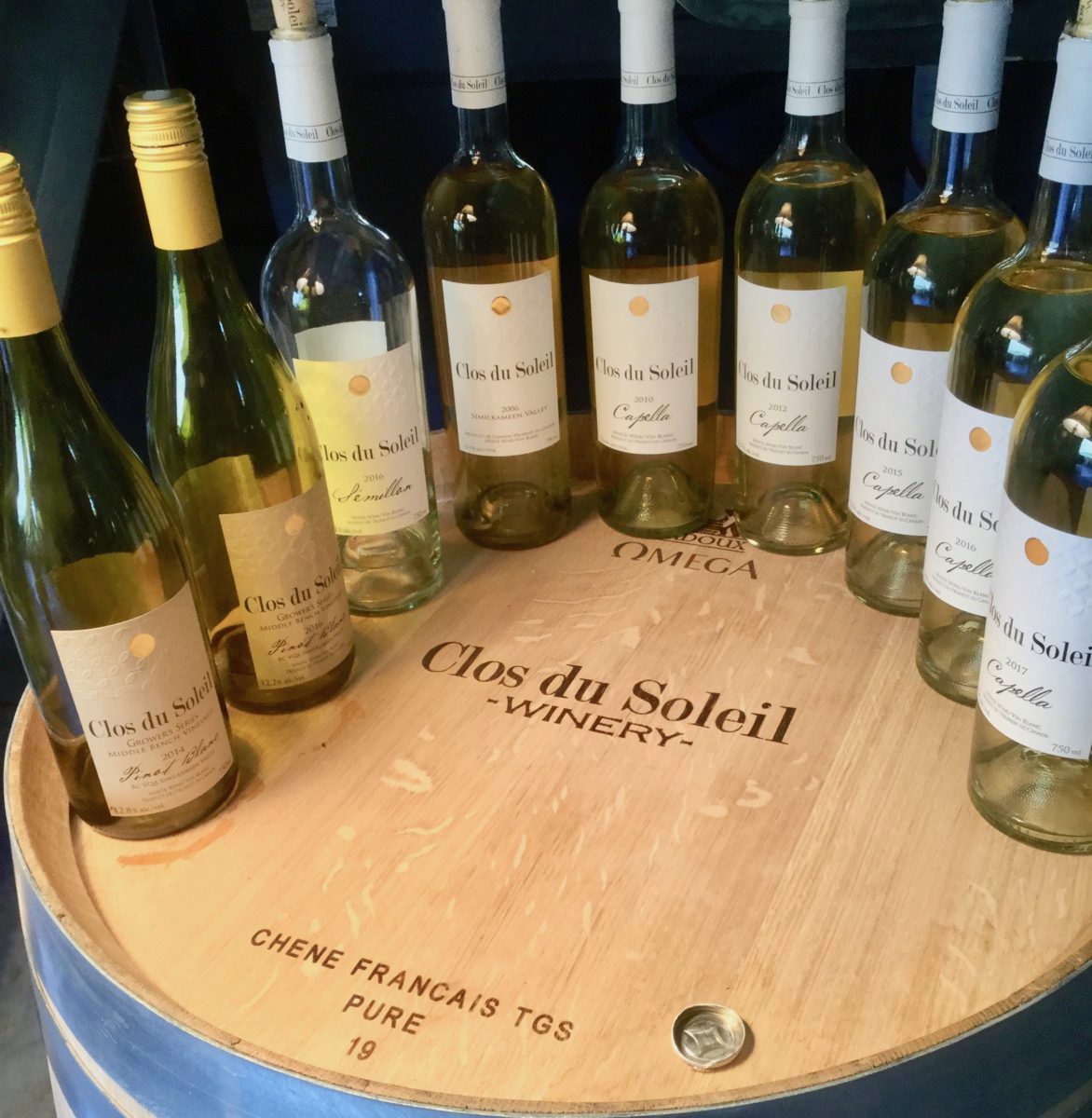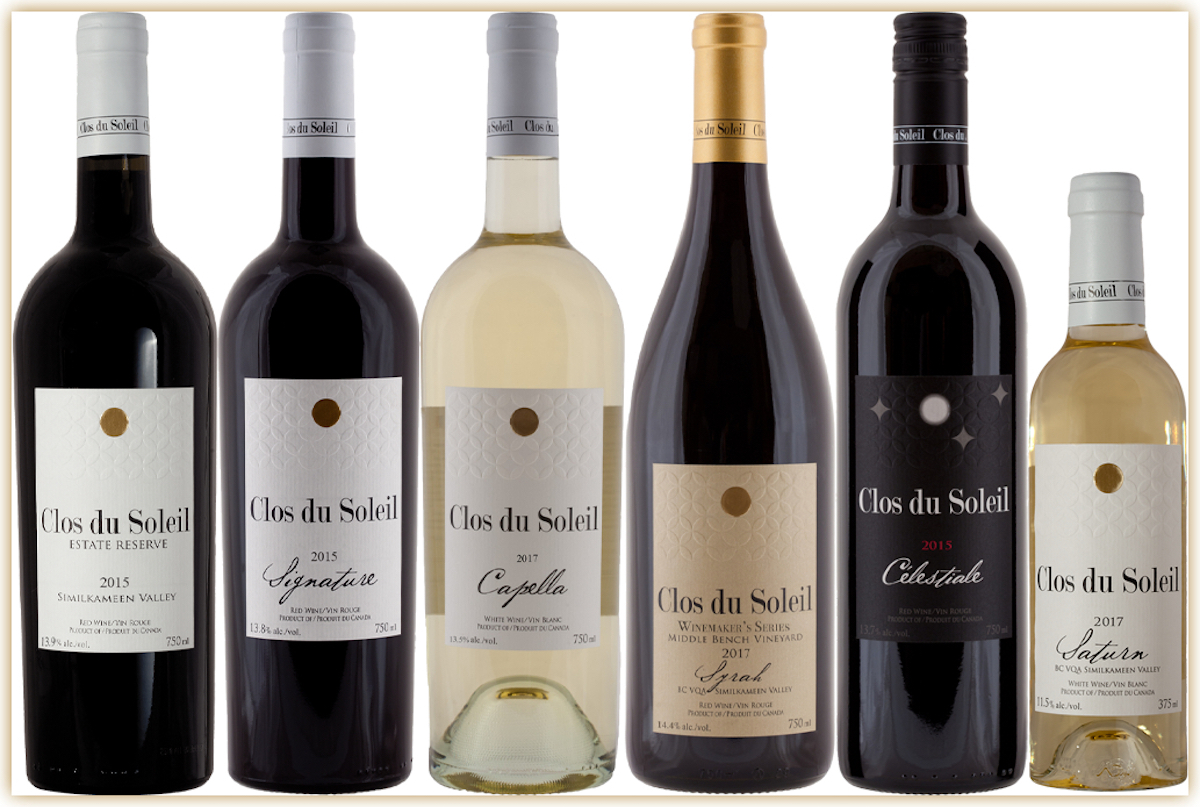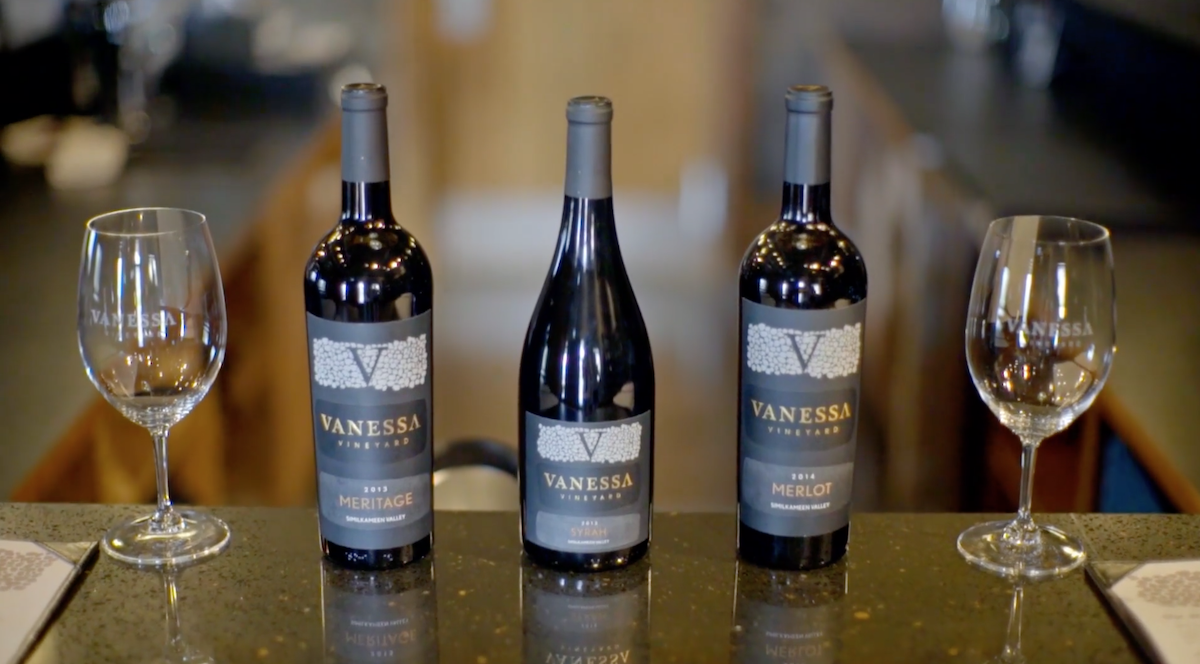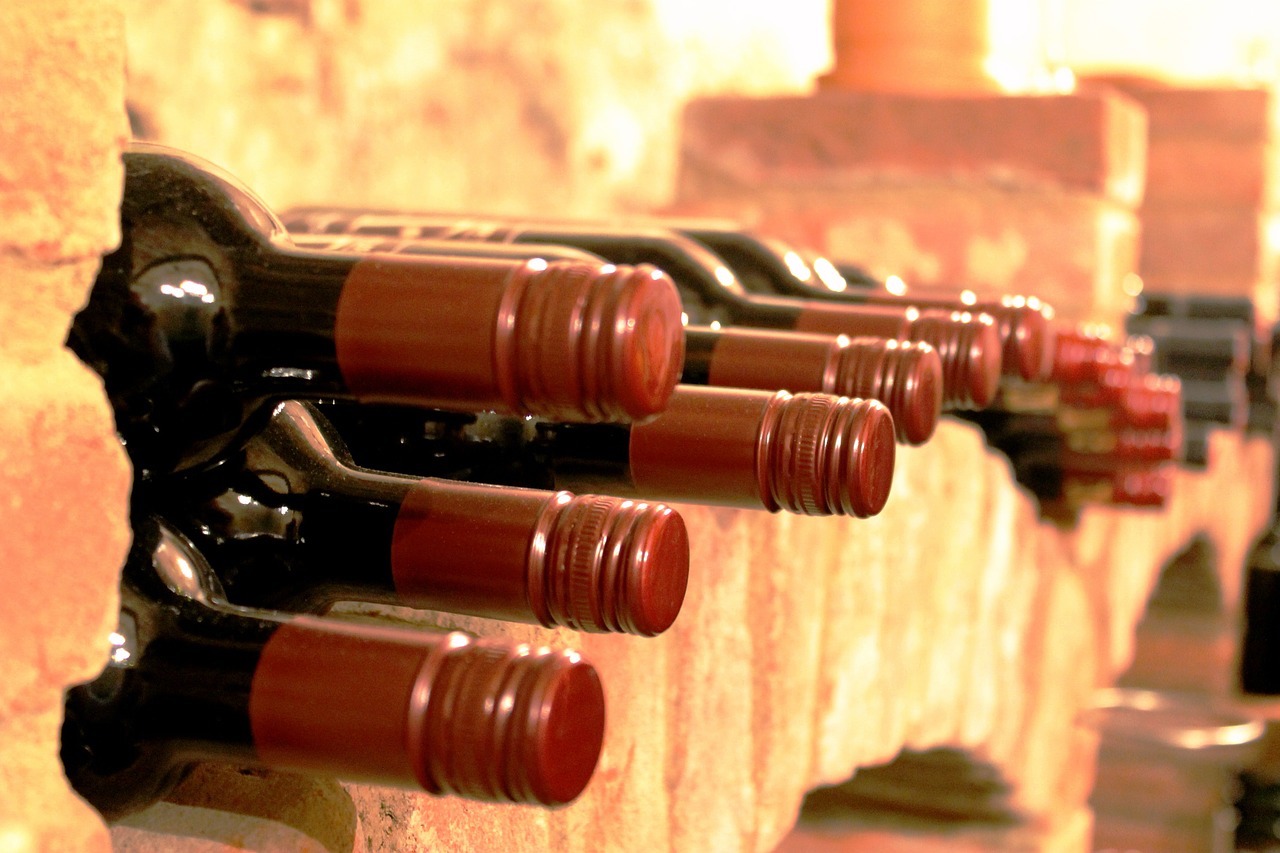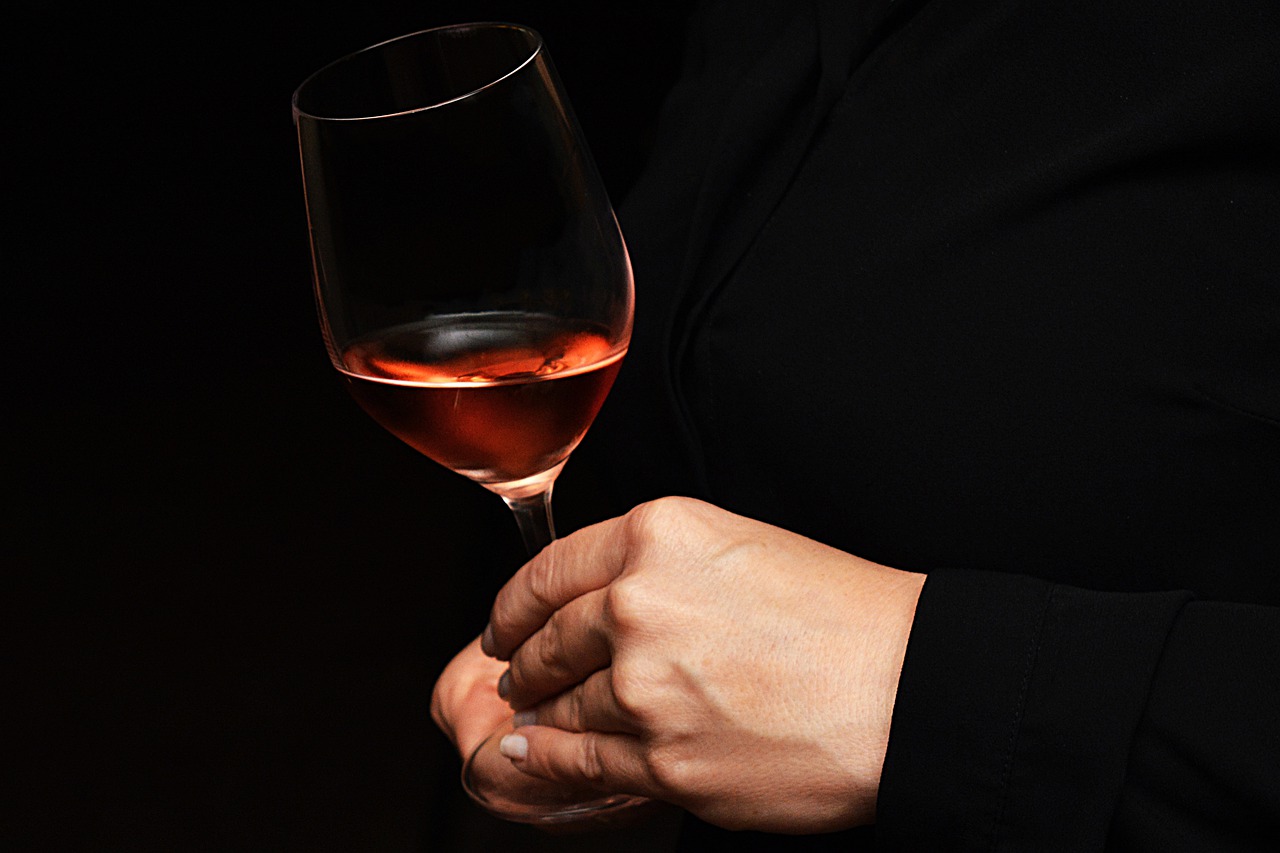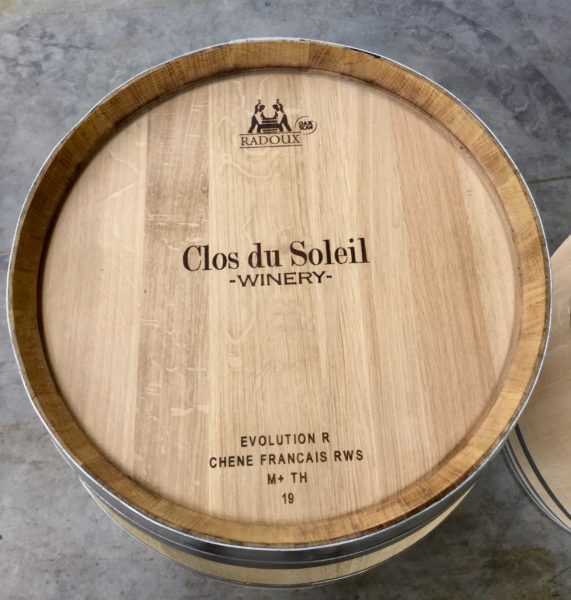
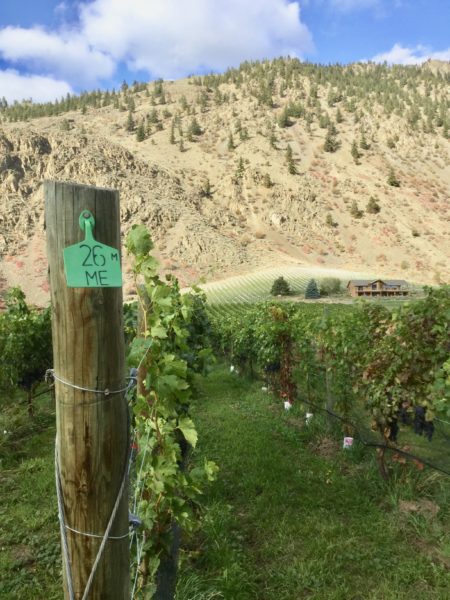
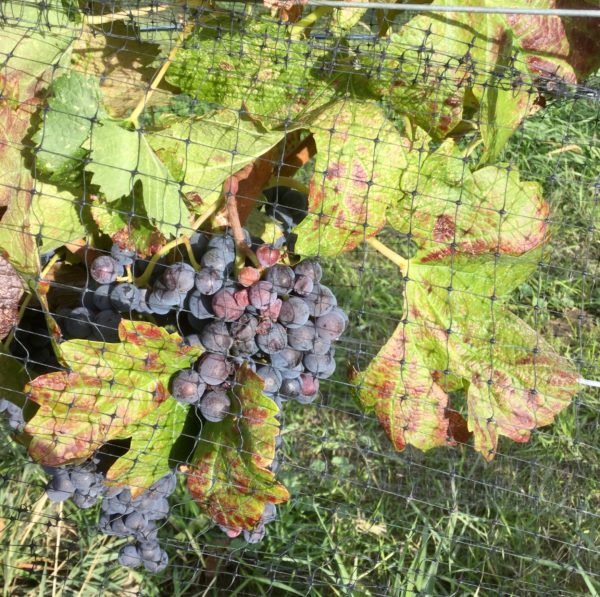
It was a beautiful sunny Saturday morning in early October. After spending the night with friends in Oliver, I headed south to Osoyoos and then west along highway 3 towards Keremeos. A short time later, I pulled up at the familiar Upper Bench winery and was delighted to see several friends and acquaintances.
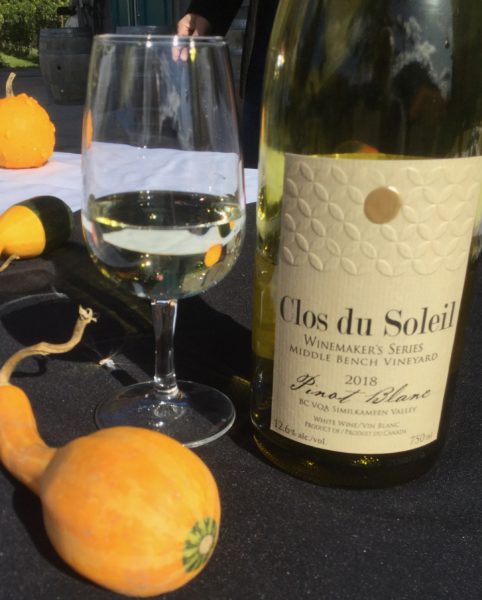
We were greeted with a nicely chilled glass of Middle Bench 2018 Pinot Blanc and offered Spanish style ham croquettas. Clearly not your usual winery tasting room fare, this was an invitation-only tasting of several vintages and Joy Road catering had been brought in to prepare a luncheon designed to pair perfectly with the wines being served. For those not familiar with the term, a ‘vertical’ tasting involves tasting a wine through several vintages to see how it ages as well as to appreciate the effect different years have on a wine. Some years are cooler than others and some are warmer. Some have a late start, others have vines budding early. All this, and much more, has an influence on the character of a wine. The best smaller wineries do not aim for consistency year after year. That is left for the big well recognized brands who cater to a market that wants reliability and predictability. Wineries such as Clos du Soleil, care more about making wines that speak of the land where they are grown as well as reflecting the year they were made. These are ‘unique’ wines in that when, let’s say the 2016 Pinot Blanc is all gone, that’s it, there is no more and the 2017 or 2018 is sure to be different in some regard. That’s what makes wines such as these so interesting.
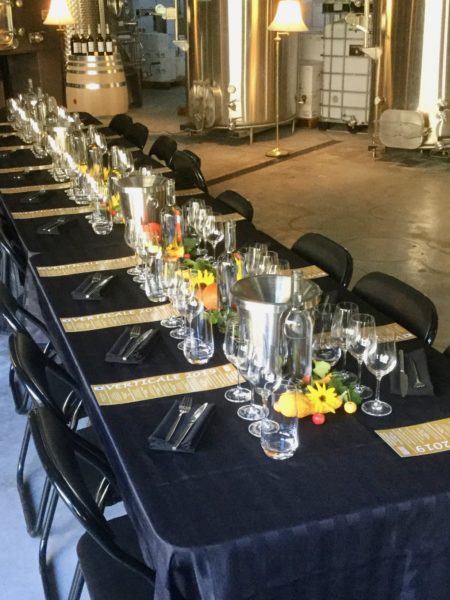
After a short time to mingle, Michael Clark, Clos du Soleil’s managing partner and winemaker, brought everyone around to the winery where a lovely long table had been set up for the occasion.
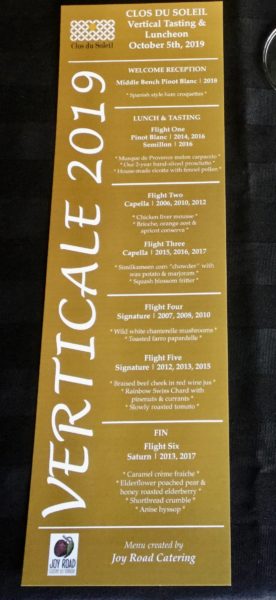
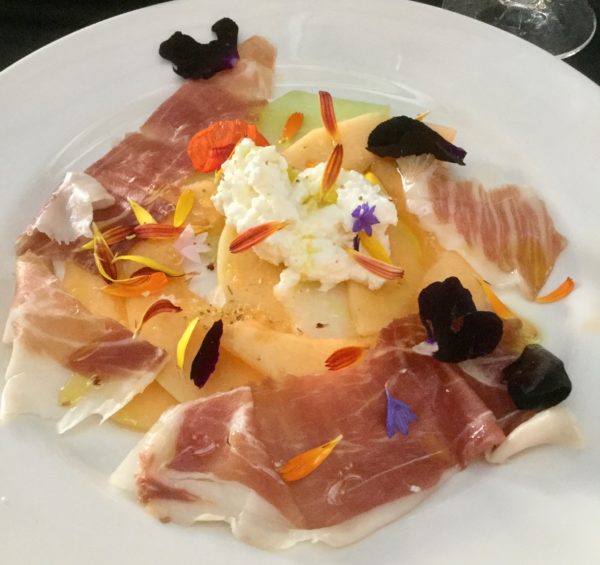
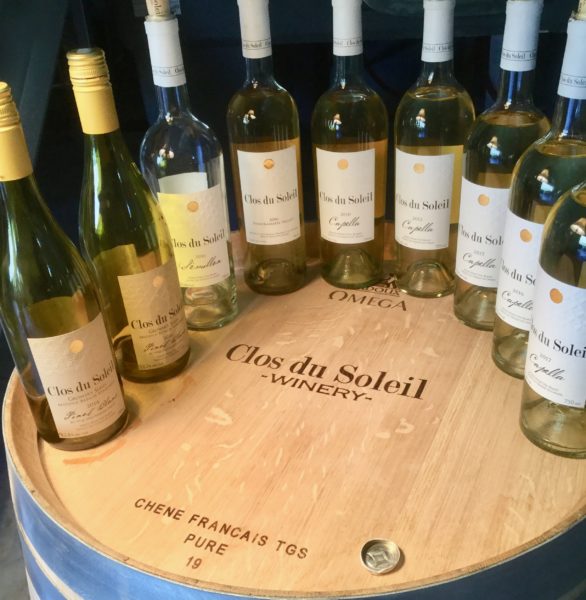
We began the luncheon with Musque de Provence melon carpaccio, two-year-old hand-sliced prosciutto served with house-made ricotta with fennel pollen. The wines for this course included Pinot Blanc 2014 and 2016 as well as a Semillon also from 2016.
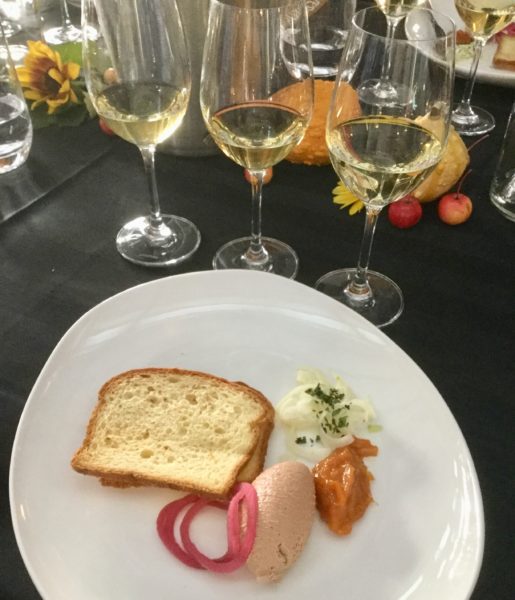
The second course featured Chicken liver mousse, brioche, orange zest & apricot conserva. The wine selected to accompany this was Capella, Clos du Soleil’s Bordeaux influenced white blend of Sauvignon Blanc and Semillon – 2006, 2010 and 2012.
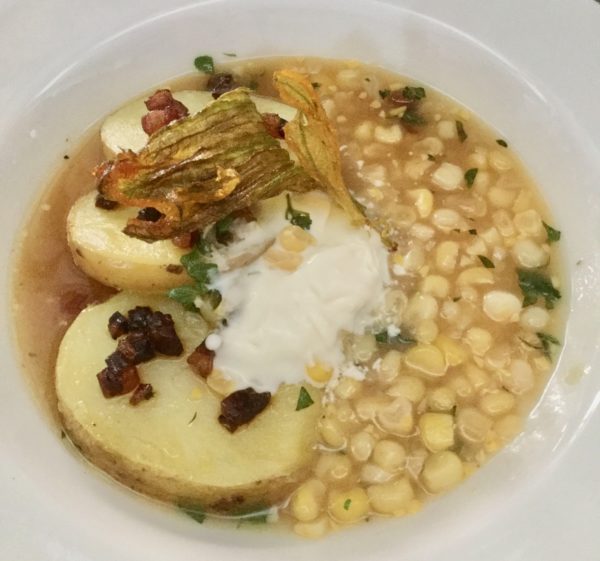
We stayed with Capella for the soup course – Similkameen corn ‘chowder’ with wax potato, marjoram and a squash blossom fritter – but this time we sampled newer vintages, the 2015, 2016 and 2017.
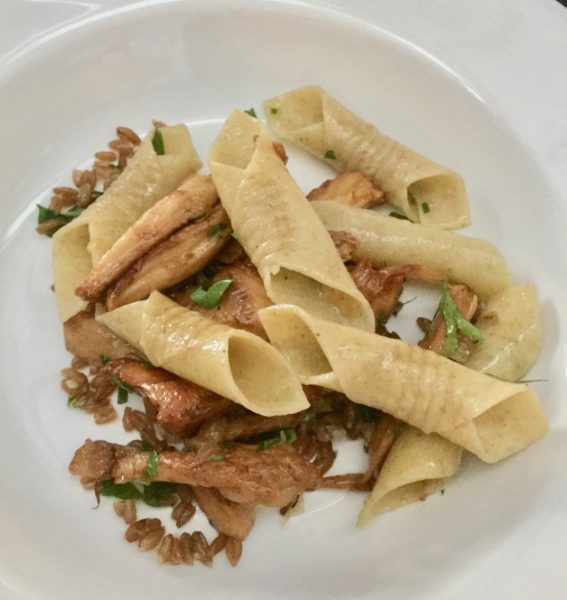
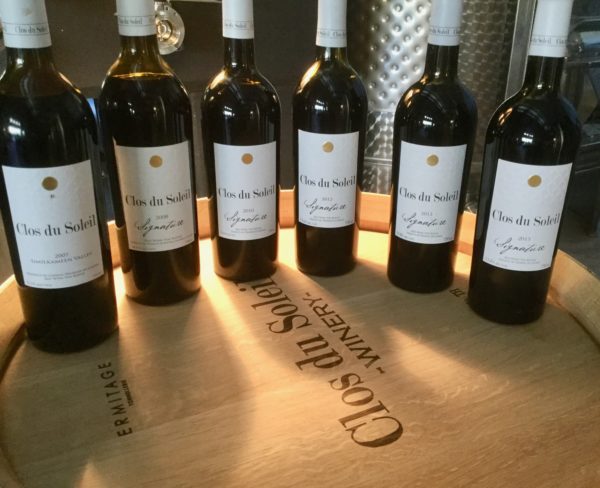
Then we moved on to the fourth course, wild white chanterelle mushrooms with toasted farro pappardelle. Now we were on to red wine, their five-grape, Bordeaux-styled blend, Signature – 2007, 2008, 2010. It was a treat to be able to taste wines that stretch back more than ten years.
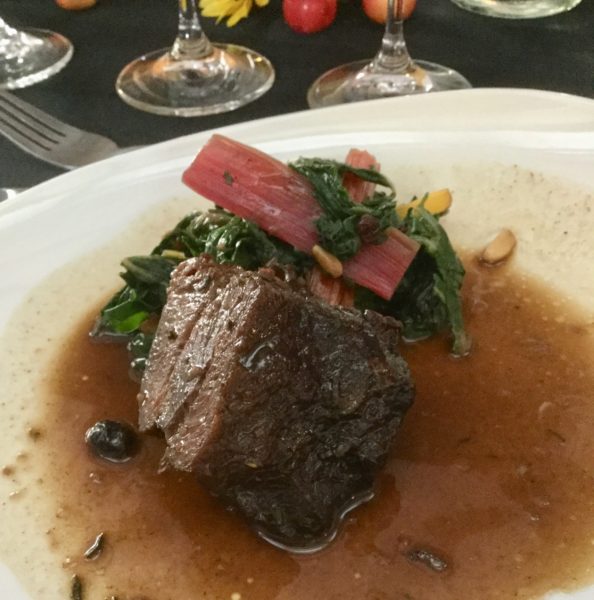
The main course – Braised beef cheek in red wine jus, accompanied by rainbow Swiss Chard with pine nuts and currants, and a slow roasted tomato – continued with Signature, this time 2012, 2013 and 2015.
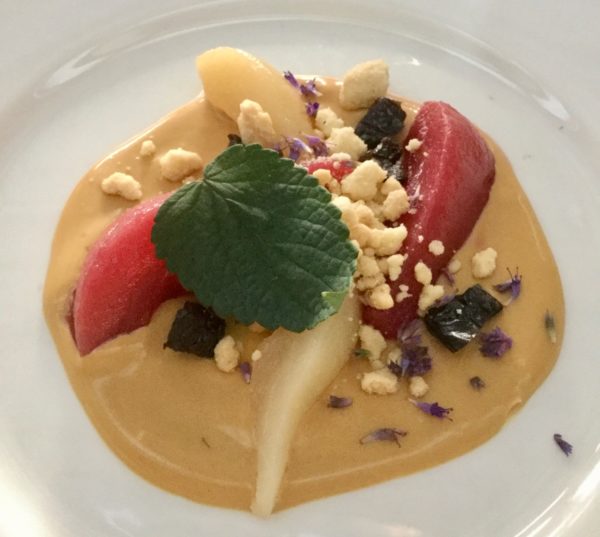
This truly amazing meal was capped with Caramel crème Fraiche, elderflower poached pear and honey roasted elderberry with shortbread crumble and anise hyssop. There is only one wine that could possibly pair with this – Saturn, Clos du Soleil’s mouthwatering, stunningly delicious, Sauternes styled Sauvignon Blanc dessert wine – 2013 and 2017.
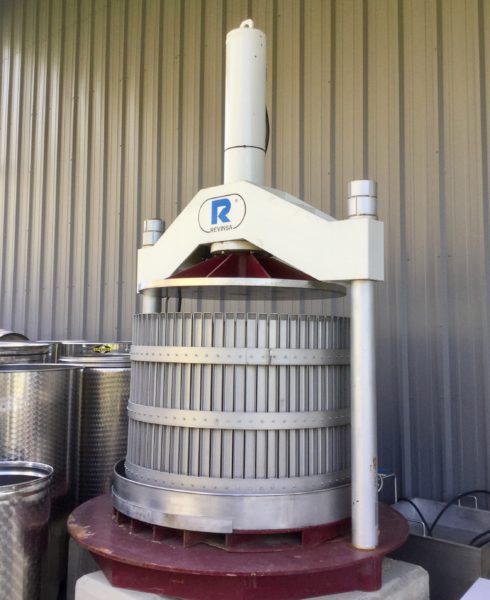
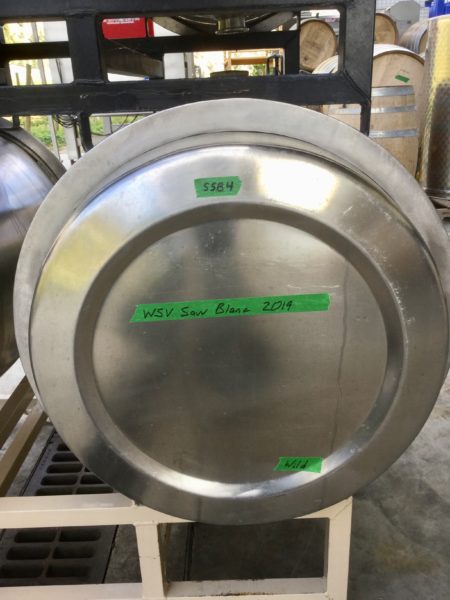
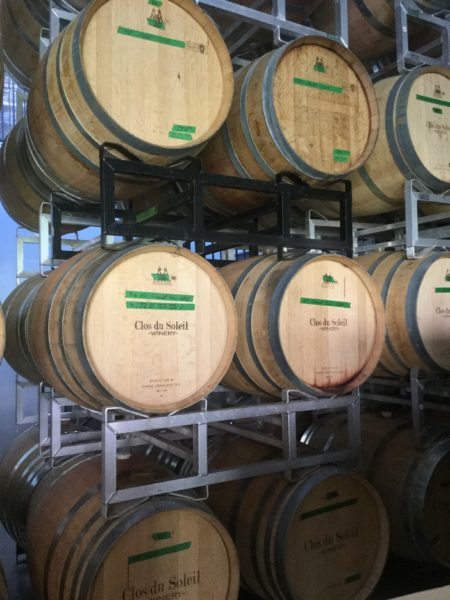
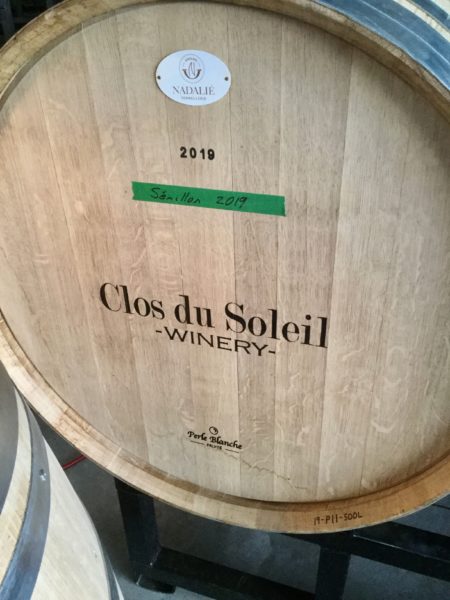
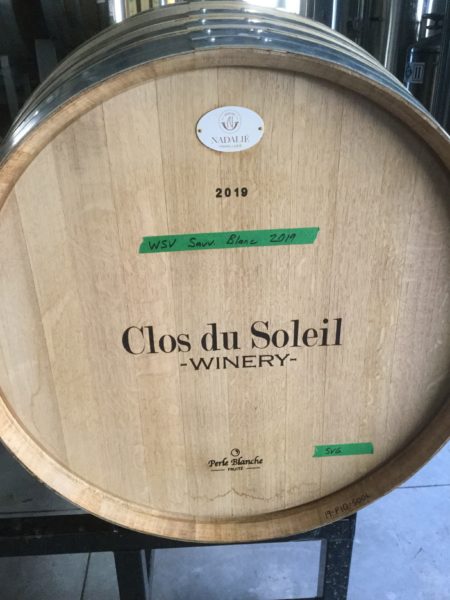
Vertical tastings are one of my favourite things to do. They are always very eye opening and educational. I have long been an advocate for cellaring and aging wines whenever and however you can. Yes, it means buying more wine than you are going to use over the next couple of days, but it really pays off. The wine (almost always) will improve and wines tend to get more expensive over the years. How nice to have six bottles of your favourite that you paid $28 for when you ‘discovered’ it and to find out that the current price tag is $45.
I recognize that fewer and fewer people live in houses with basements that are ideal for storing wines, but you can make it work almost anywhere. The most important thing to consider is where will the temperature be the coolest and the most consistent. Big temperature fluctuation is the biggest concern. If it can also be dark and not-too-low humidity that is a bonus. (See addendum for storing wine below).
Clos du Soleil impressed me with their wines from the day I first tried them. They are also great value for the equality they deliver. Go grab some today.
Guidelines for storing wine
Temperature
The ideal temperature is between 12 – 15° C (55 – 59° F). It isn’t a serious problem if the temperature is a little outside of these parameters as long as the temperature is relatively consistent, though the warmer the temperature, the faster the wine will age. Professional storage is also an option if you are a serious collector with deep pockets. Wine fridges can be a good solution and vary in price depending on their size and features. If you have no other choice, storing wine in the refrigerator (who needs food?) for a few months is fine, but not for long term.
Humidity
If the air is too dry, there is a danger of the corks drying out and shrinking. Ideal humidity is between 55 – 75%. I was able to buy a combined temperature and humidity gauge for a very reasonable price at my local hardware store.
Light
Strong light, especially sunlight can have a negative effect on wine. Darker is better.
Storage
Although screw top bottles do not need to be stored on their side like cork sealed bottles, it is still the most space efficient way to store wine.

